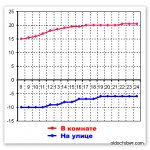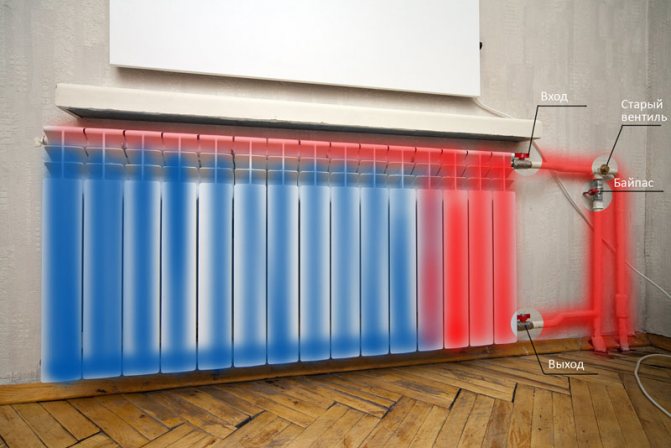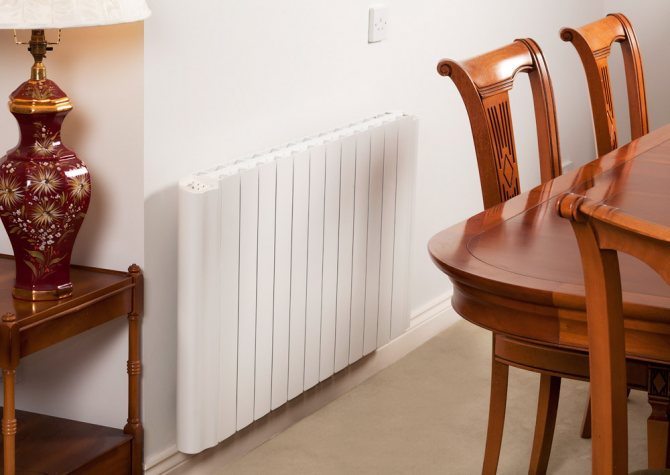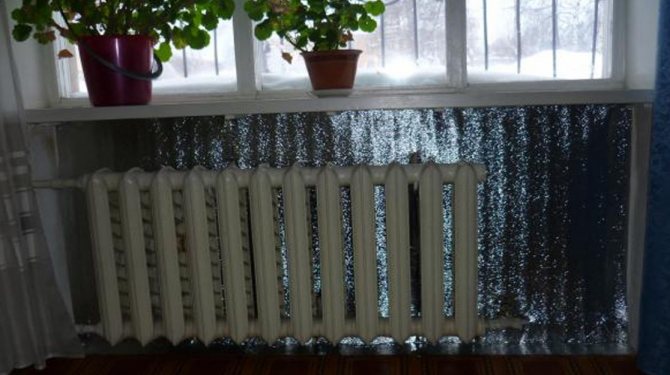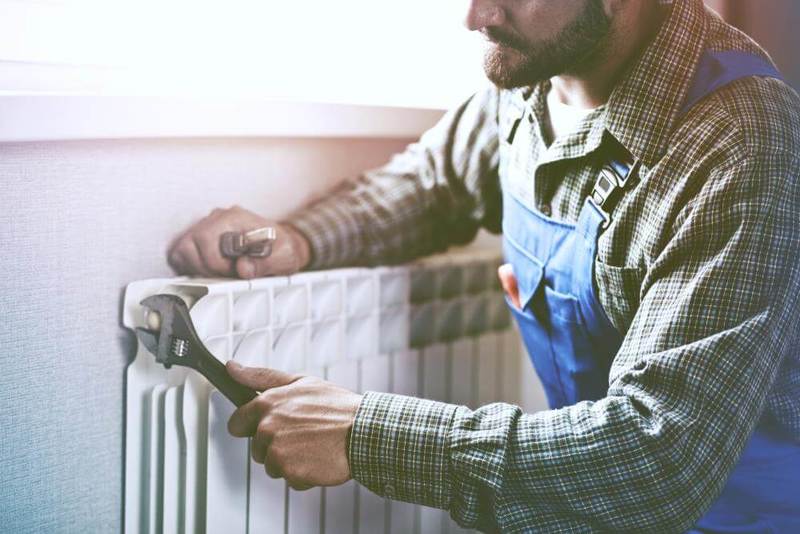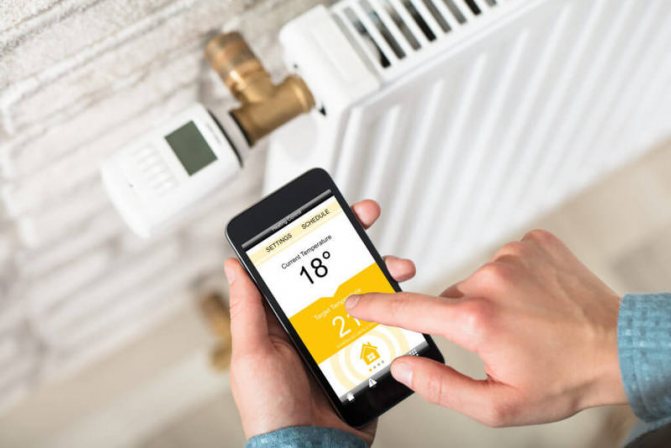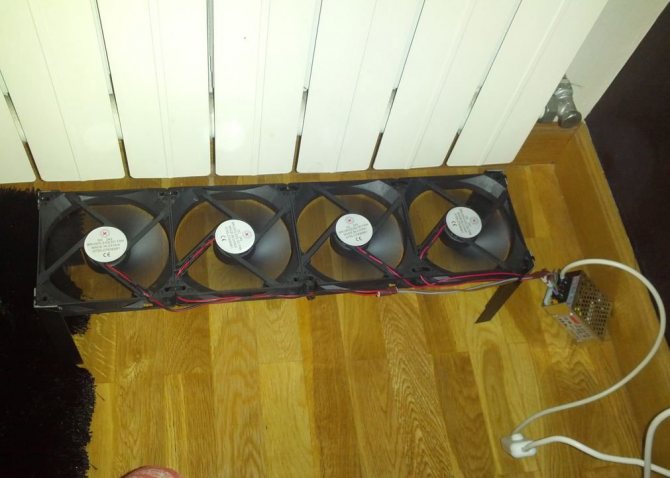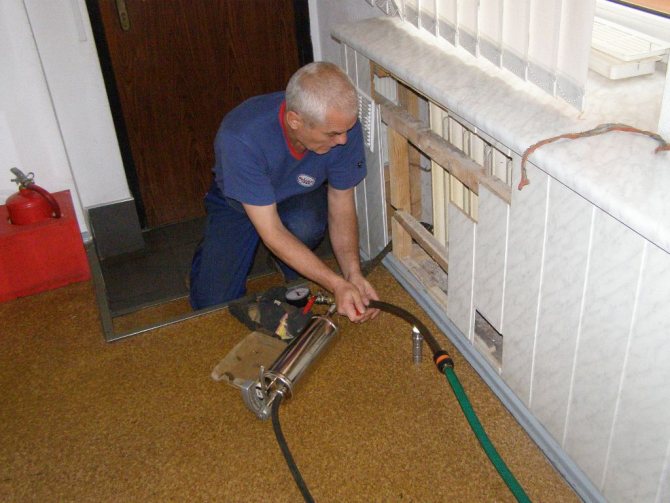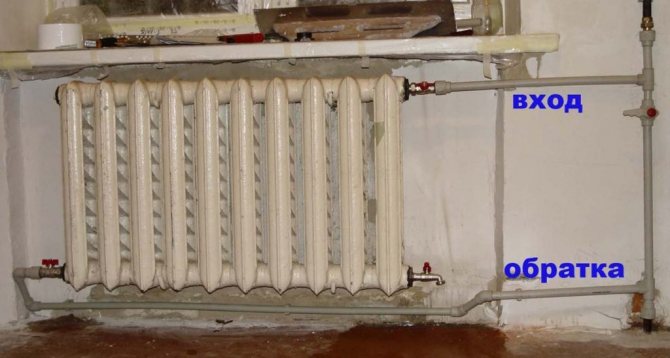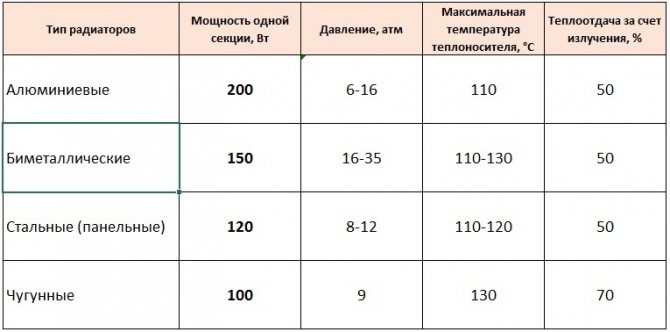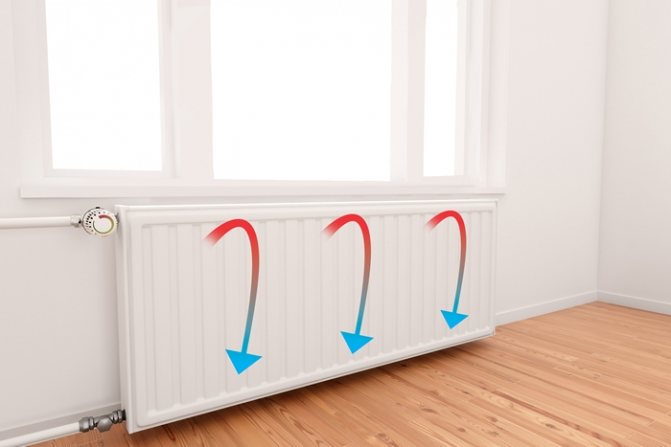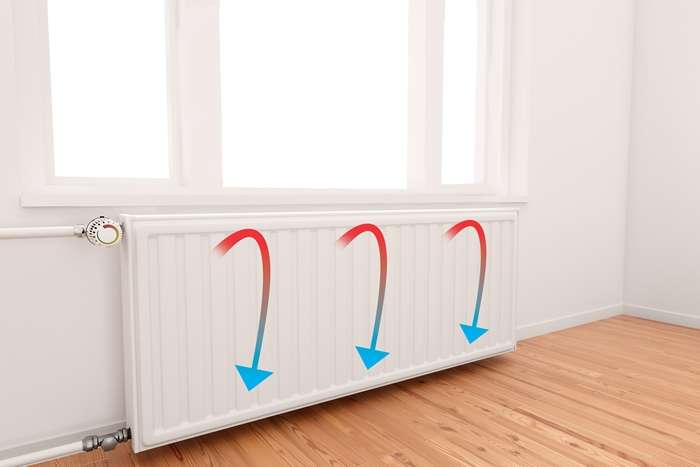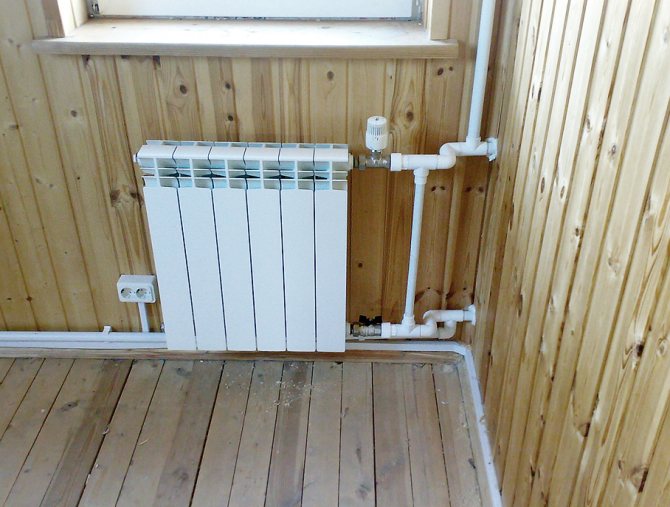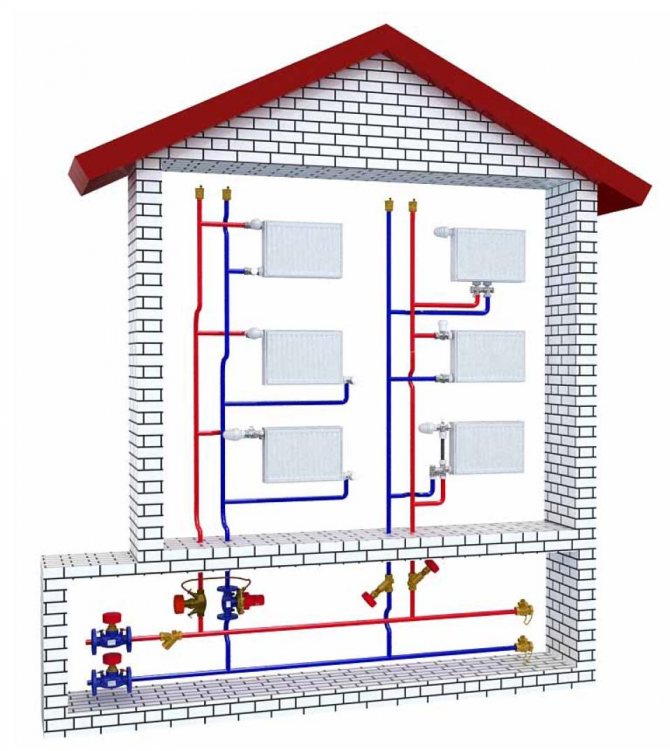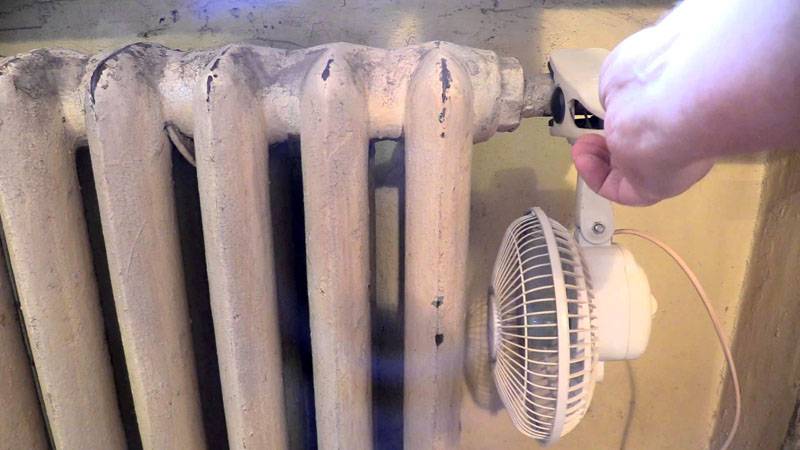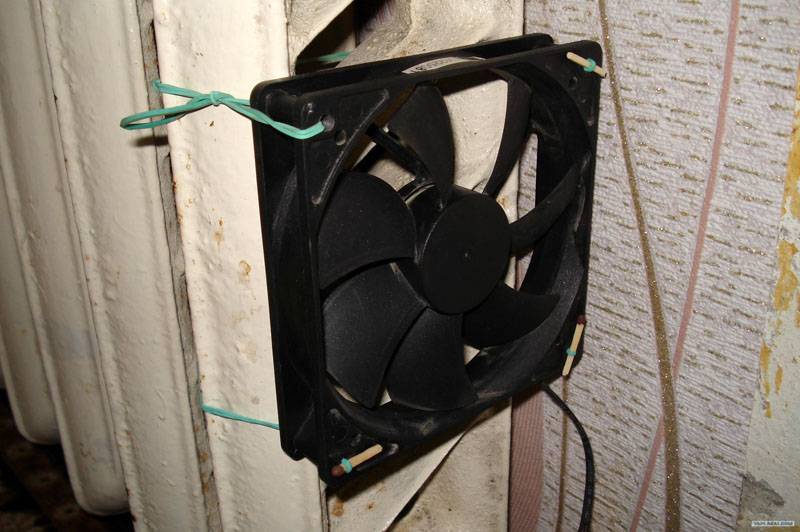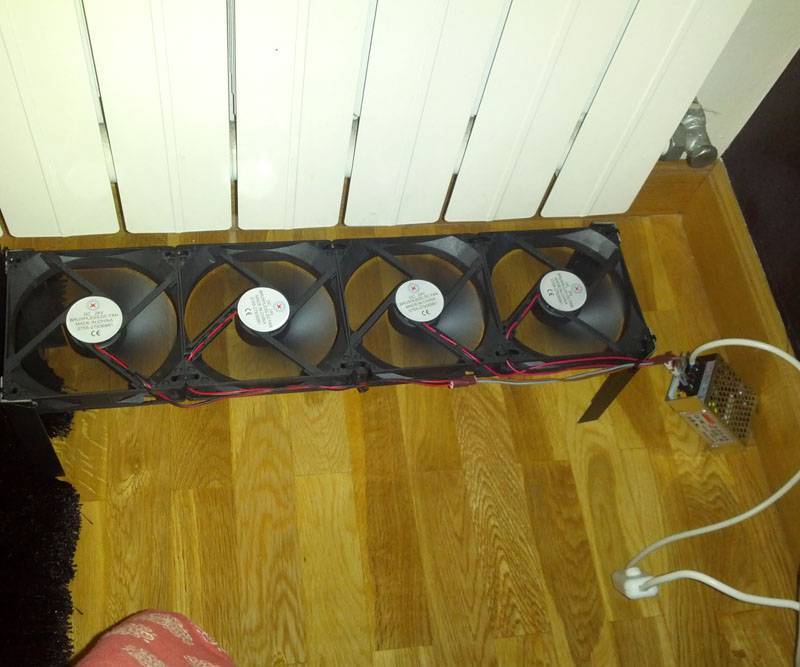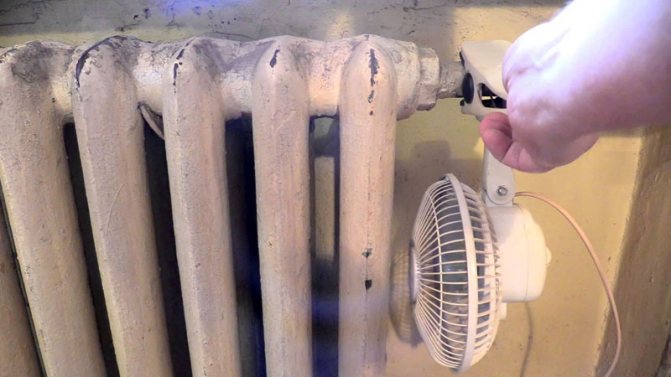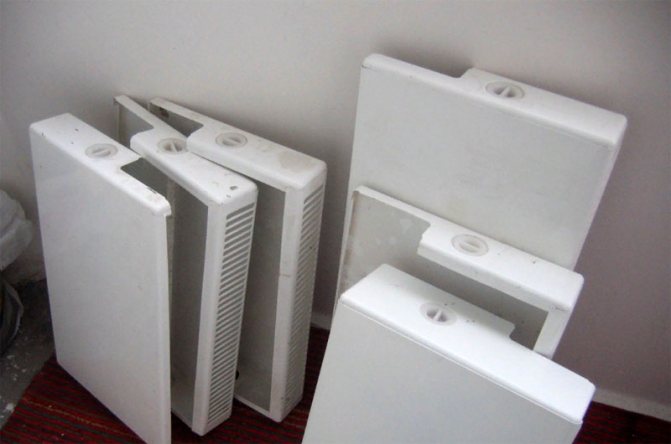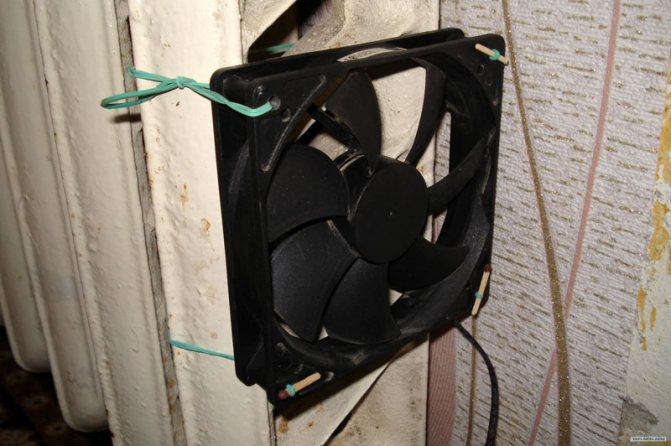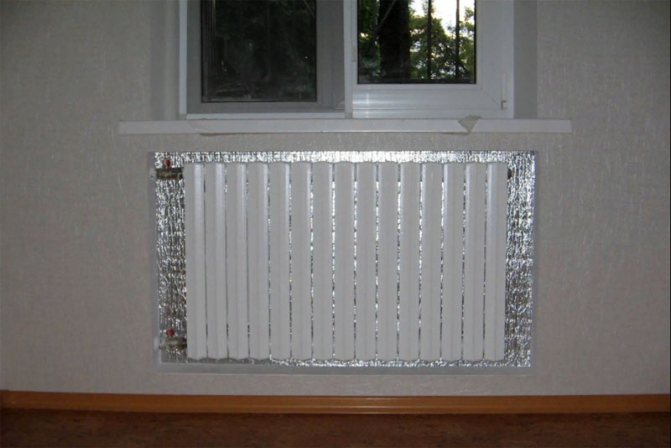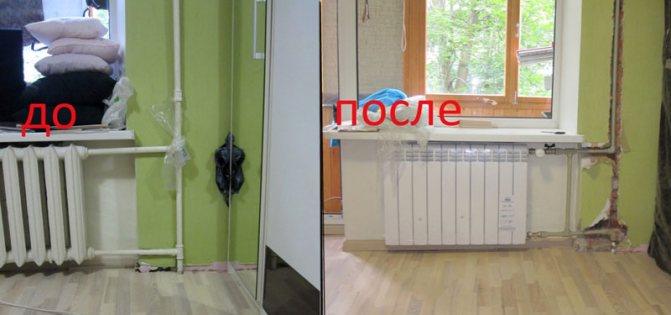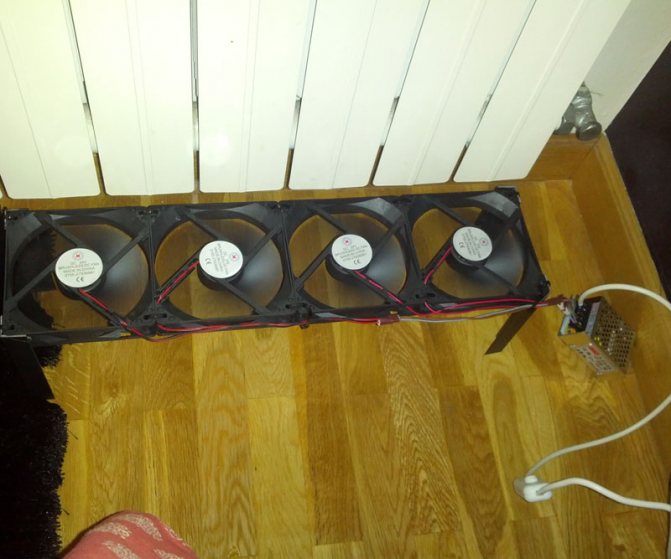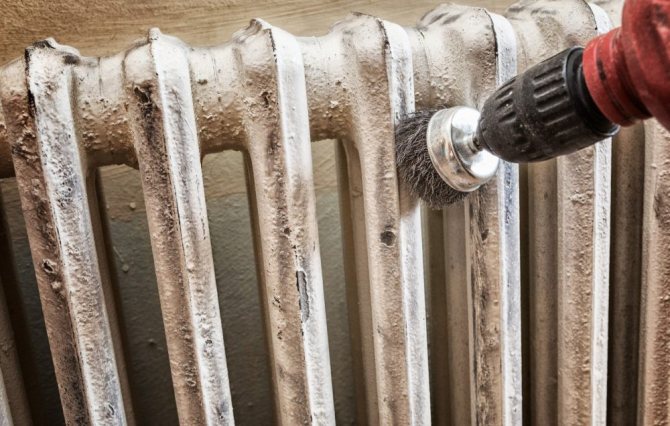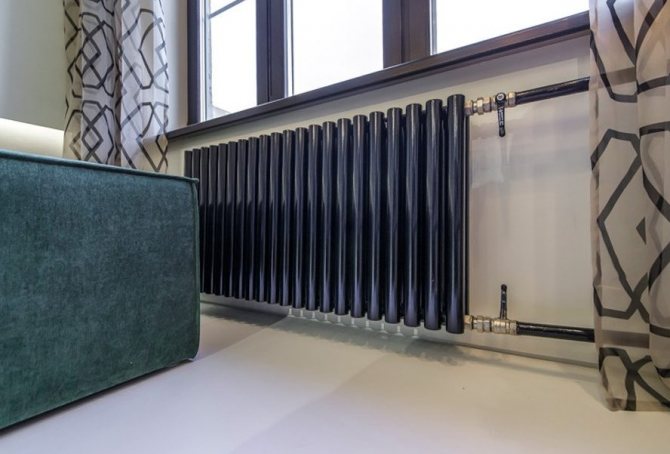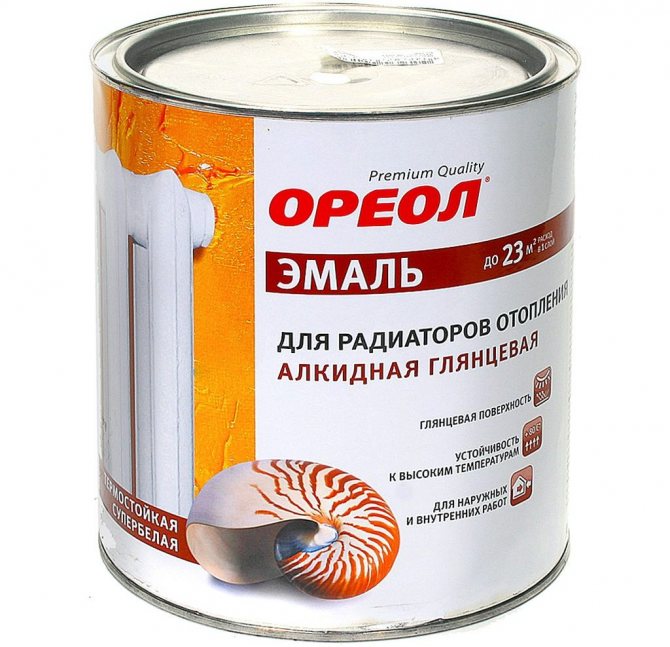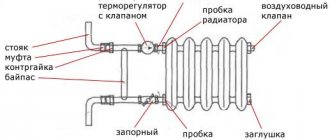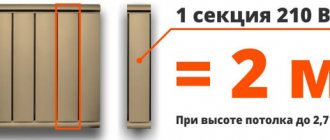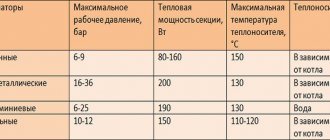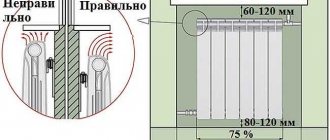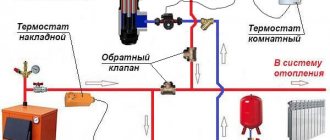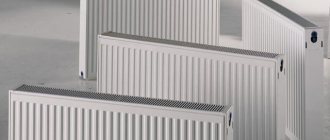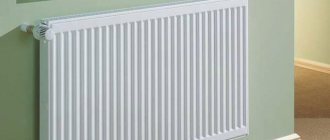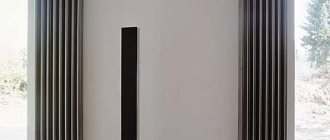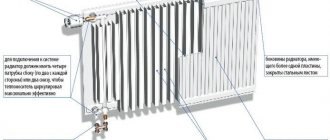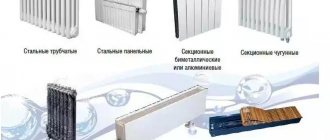Experimental data.
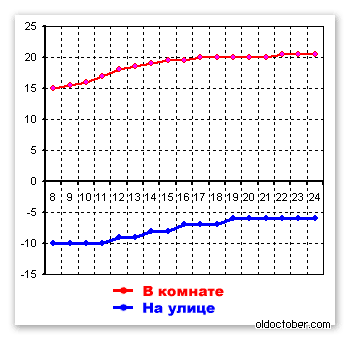
The first day of the experiment.
All graphs show temperature changes from 8.00 am to midnight.
Heat carrier temperature 42ºС.
The graph shows that the system worked more efficiently while the temperature difference between the air and the battery was large. When the difference decreased, the system stabilized.
The air temperature in the center of the room at a height of 65 cm from the floor rose from 15 ° C to 20 ° C in 9 hours.
Subsequently, the temperature increased by another 0.5 ° C.
The power consumption of the fan was 35.2 watts.
When, during the experiment, I left my room into the corridor, I immediately felt the temperature difference, because by that time I had already taken off the warm clothes.
I went to the barn and brought another fan from there. This fan was not equipped with a power switch, so I connected it through a homemade triac regulator, the design of which is described in detail here.
Well, life has become better, life has become more fun!
The second day of the experiment.
In the morning, I again measured the temperature of the coolant, as well as the temperature of the air in the room. All values remained unchanged, including the temperature overboard.
No temperature changes were noticed during the day.
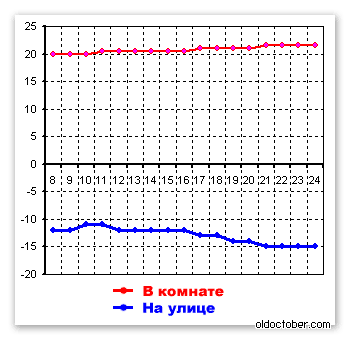

The third day of the experiment.
The coolant temperature increased by one degree and amounted to 43ºС.
The temperature outside decreased and reached -15 ° C.
At the same time, the temperature in the room increased by another 0.5 ° C and reached 21.5 ° C.
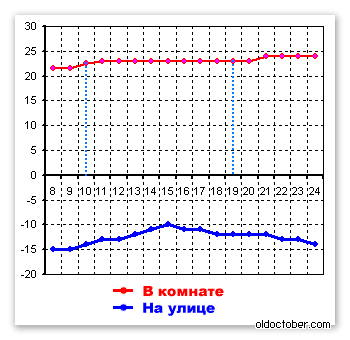

The fourth day of the experiment.
The coolant temperature is still 43 ° C.
Temperature outside in the morning is -15 ° C.
The temperature in the room in the morning was 21.5 ° C.
Since no significant temperature changes were noted over the past day, I decided to increase the air flow and installed a second fan at 10.00.
After 10-15 minutes, the air temperature immediately increased by one degree, and then by another half a degree and reached 23 ° C.
Walking like that, I thought, and at 19.00 I turned on both fans at full power. The temperature in two hours increased by one more degree and reached 24 ° C.
Ways to improve the heat dissipation of the battery
There are a lot of such methods, using several of them, you can significantly increase the heat transfer of batteries.
Natural convention. This is the simplest way to increase heat transfer, based on an elementary natural law. The heated air rises to the upper part of the room, and after cooling down, it goes down again. To
Natural convention worked at full capacity the batteries are best installed under a window. This will allow the cold air coming from the window to immediately heat up and rise to the top, and not pass into the room unheated.
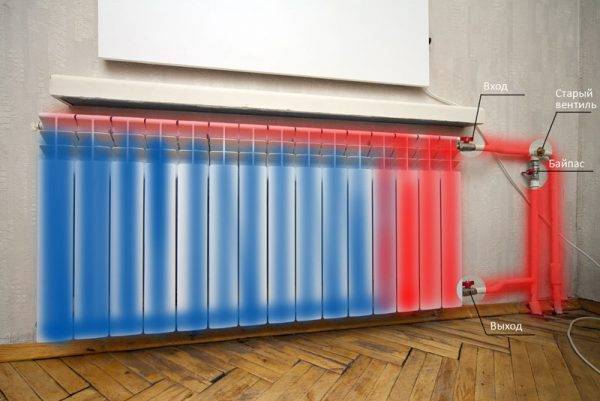

Freeing up space around the battery. This method will help the cold air to heat up faster, since nothing will interfere with it. Installed furniture, dense textiles and various decorative ornaments of the battery significantly degrade and slow down the heating of the air.
If the batteries are open, the air circulation will not be disturbed and it will heat up quickly enough. Therefore, it is best to leave the space in front of the battery free.
Reflective screen. This screen is needed so that the battery does not heat the cold wall behind it, but directs all its heat into the room. The reflective screen helps with this, it allows you to direct the heat emanating from the battery in the right direction. It is quite simple to make such a screen.
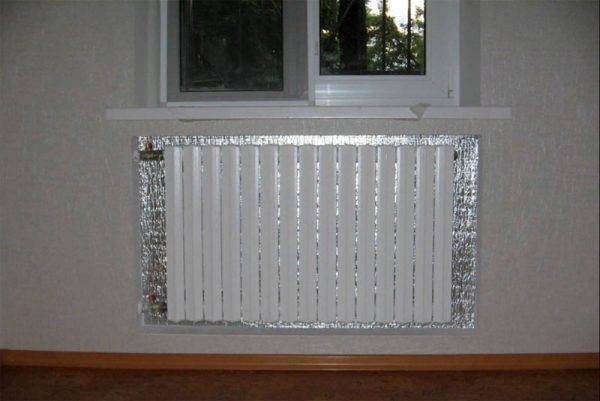

It can take either foil or any other material with a foil surface and attach it to the battery. The main thing to remember is that there must be a space of at least two centimeters between the material and the battery. This is necessary so that the air can circulate normally.
Electric fan. The installation of such a device will improve air circulation, thereby speeding up the process of heating the air. This method is very effective and makes it possible to increase the temperature in the room by several degrees in a short time.
The main thing to remember is that the appliance can overheat itself, so you need to turn it on exclusively under viewing and not for a long time.
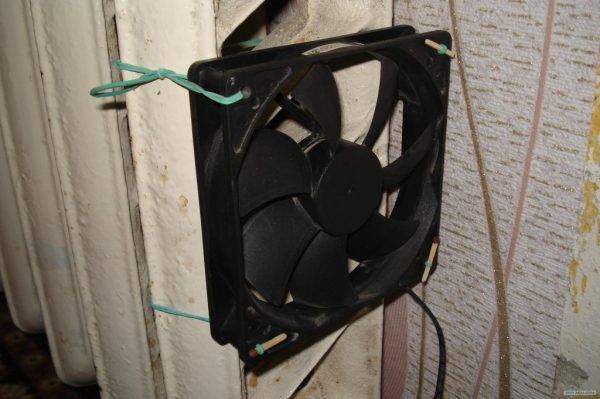

In order for the heat transfer of the battery not to deteriorate, it is necessary to regularly wet clean. Dust significantly impairs the heat transfer of heating devices and pollutes the air in the room.
Also, before the start of the heating season, it is necessary to bleed air from the batteries, since it greatly impairs the heating capacity. It is necessary to carry out such a procedure only after water has been run through the pipes. Reading the battery this way will improve its heat dissipation.
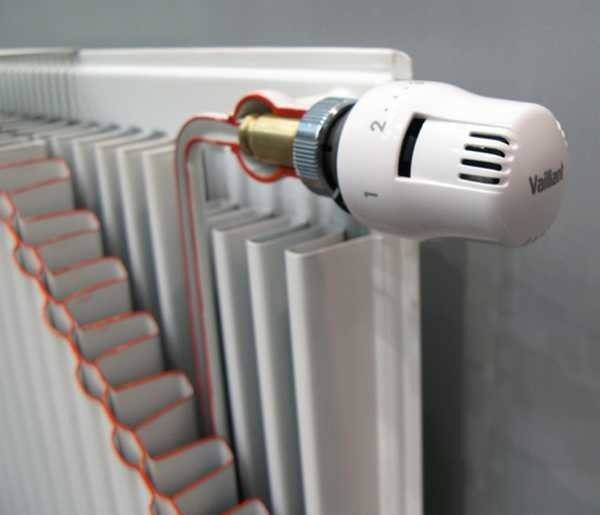

Such methods are quite effective, thanks to their use, the heat transfer of the batteries can be significantly improved and the temperature in the room can be increased by several degrees. If these methods do not help in any way, then most likely you will still have to change the batteries to new and more powerful ones.
But the replacement can no longer be carried out without the help of specialists, since this process requires certain knowledge and skills.
And it also entails a considerable amount of material costs, so it is better not to replace and install new batteries on your own, it is better to turn to knowledgeable and experienced craftsmen.
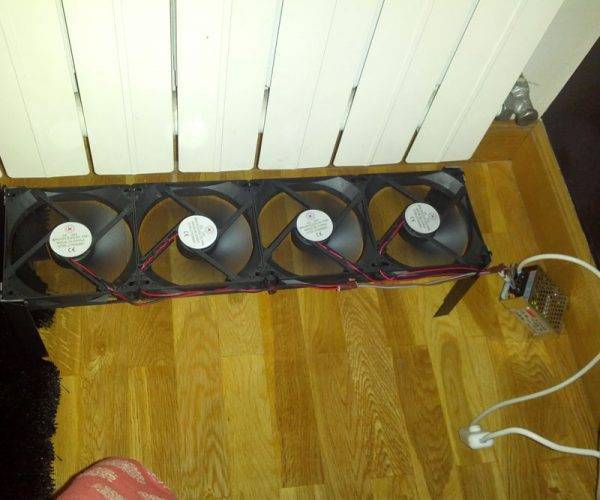

How to increase the heat dissipation of batteries yourself
It is better to use enamels known to all as a coating for cast-iron heating radiators, and acrylic, alkyd and acrylate enamels are more suitable for aluminum and steel batteries.
Why the question with painting is so, and not otherwise, can be explained quite simply: cast-iron radiators are quite easy to paint with any kind of enamel due to their structure. The thin fins of aluminum radiators can be clogged with too thick paint. At the factory, radiators with a thin body and many plates are painted with powder paints that do not pose a threat to the quality characteristics of the radiator and do not change the type of heat transfer. By coloring the battery in a dark color, the efficiency of the heating elements can be increased up to 15% of the usual value. (See also: Comparison of heating systems)
- Using reflective screens.
The heat that radiates from the battery spreads in all directions. Therefore, at least half of the useful heat radiation goes into the wall located behind the heating devices. You can reduce unnecessary heat loss by placing a screen behind the radiator, for example, made of ordinary foil or a ready-made one bought in a store. When using even a home-made screen made of a thin metal sheet, not only the heating of the wall stops, but an additional source of heat is also created, since, when heated, the screen itself begins to give off heat to the room. When using a reflective screen, the efficiency of cast iron batteries, and many others, can be increased up to 10-15%.
- Increase the surface area of batteries.
There is a very direct relationship between the surface area that emits heat and the amount of this heat. An additional casing can be used to increase the heat dissipation of the radiators. The material from which it will be made must be carefully torn off. For example, aluminum casings have the highest heat transfer. They are used as an addition to cast iron radiators.With frequent interruptions in the operation of heating systems, you should think about purchasing steel casings, which keep the heat received from radiators for a very long time. Accordingly, this type of battery cover will release heat to the surrounding area much longer than others.
- Create additional air flows in the room.
If you direct the air flow to the heating devices, for example, with the help of a conventional household fan, then the air in the room will be heated much faster. It should be borne in mind that the direction of the air flow should be vertical and directed from bottom to top. With this method, the increase in the efficiency of radiators can reach 5-10%.
Using even one way to improve the heat dissipation of the batteries can significantly increase the room temperature and reduce the cost of additional heating. Before you start to improve the characteristics of radiators, make sure that they are correctly connected to the heating network and that the heat supply regulators on the latest generation appliances are set to the required value. In addition, with a constant problem with heat supply, you need to pay attention to the thermal insulation of walls and windows, through which heat usually escapes. It is necessary to insulate not only the outer walls, but also those that overlook the staircase.
HomeSitemap
What is efficiency and how to calculate it
The heat transfer of heating devices, which include batteries or radiators, is made up of the quantitative indicator of the heat that is transferred by the battery over a certain period of time and is measured in watts. The process of heat dissipation by batteries takes place as a result of processes known as convection, radiation and heat transfer. Any radiator uses these three types of heat transfer. In percentage terms, these types of heat transfer can vary for different types of batteries.
What will be the efficiency of heaters, in the overwhelming majority of cases, depends on the material from which they are made. Consider the advantages and disadvantages of radiators made of different types of material.
- Cast iron has a relatively low thermal conductivity, so batteries made from this material are not the best option. In addition, the small surface of these heating devices significantly reduces heat transfer and occurs due to radiation. Under normal conditions of an apartment, the power of a cast iron battery is no more than 60 watts.
(See also: Which is better to choose a heating radiator)
Steel is slightly higher than cast iron. More active heat transfer occurs due to the presence of additional ribs, which increase the area of heat radiation. Heat transfer occurs as a result of convection, the power is approximately 100 W.
Aluminum has the highest thermal conductivity of all the previous options, their power is about 200 watts.
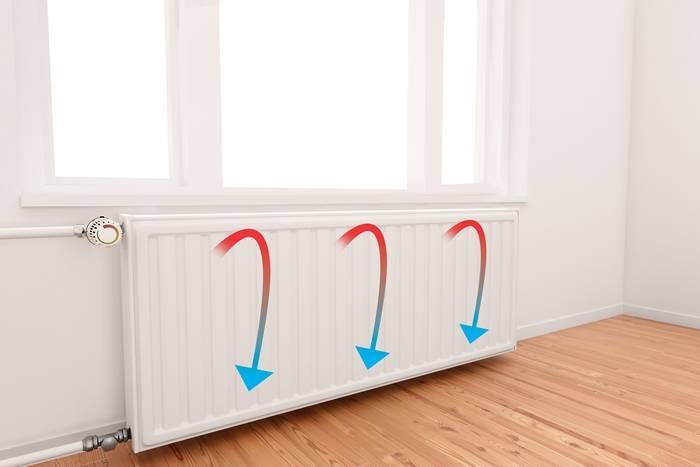

In addition, for the most efficient heating, it is necessary to consider how much power may be required. When calculating the power of heating devices required for a room, the number of walls facing the street and windows is used. For every 10 m2 of floor in the presence of 1 outer wall and a window, about 1 kW of thermal power of the battery is required. If there are 2 external walls, then the required power is already 1.3 kW. (See also: Hot water heaters)
The bottom connection is used if the heat transfer pipes are hidden under the floor screed and does not exclude heat loss in an amount up to 10% of the original value. One-pipe connection is considered the least effective, since the power loss of the heating device with this method can reach 45%.
How to correctly calculate the power of the heating battery
It should be noted that heat transfer is the power or heat flow of the heating device.Let's consider how it is calculated for a specific room, which in our case has an area of 14 m 2 and a ceiling height of 2.7 m.
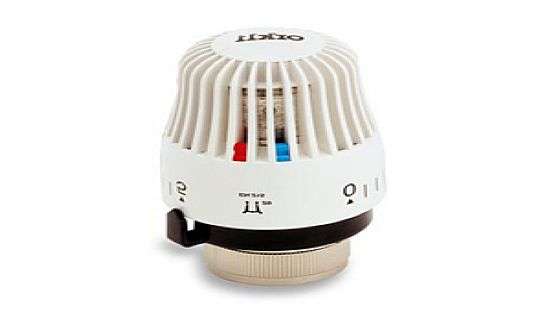

The most common way to calculate correctly is based on the presence of exterior walls and windows in the room. For example:
- if the room has one wall facing the street and one window, then 1 kW of power is needed for 10 m 2;
- if the room has two outer walls and two windows, then 10 m2 will require a heater with a heat output of 1.3 kW.
Consider the second method for determining the required amount of heat flow to heat a particular room:
- S * h * 41, where S is the area of the room;
- h - ceiling height;
- 41 - indicator of the minimum power per 1 m 3 of the room.
Having made a calculation using this formula, we determine that for our room with an area of 14 m 2 and a flow height of 2.7 m, we get that we need to purchase a radiator with a capacity of 14 * 2.7 * 41 = 1549 W, which corresponds to 1.5 kW, and since one section (depending on the brand) has a power of up to 100 W, it is quite easy to determine that you will need to purchase a 15 section heating battery.
It is important! If, during the calculation, a non-integer expression is received, then it is rounded up.
In the event that they want to know how to regulate the heat in the batteries, it is necessary to carry out work on the installation of a thermostat, which ensures uniform heating of the room to a certain temperature.
For high-quality operation of the heater, as well as for warming up the room, it is necessary to determine the heat transfer of the battery and, if necessary, try to increase it.
We considered the question of how you can independently carry out work to increase the heat transfer of the heating system, but if you don't understand what's what, then call a plumber who will not only quickly and efficiently do all the necessary work, but also explain what and how. do.
(No votes yet)
Common reasons for a decrease in heat transfer from a heating battery
The most common reason for a decrease in heat transfer from radiators is scale and rust that accumulates inside. If the radiator itself is flushed (which utilities should do annually), then the heat transfer will increase significantly. The same applies to heating risers. However, it will not be possible to carry out such a procedure on its own due to the fact that during the production of such work (even in summer), it is necessary to drain the water from the system. Here you cannot do without the help of specialists. The same applies to the replacement of radiators from cast iron to bimetallic - they have a high heat transfer. Therefore, we will not dwell on such complex and time-consuming options. It is better to consider simpler methods that any home craftsman can perform, even without experience in a similar field.
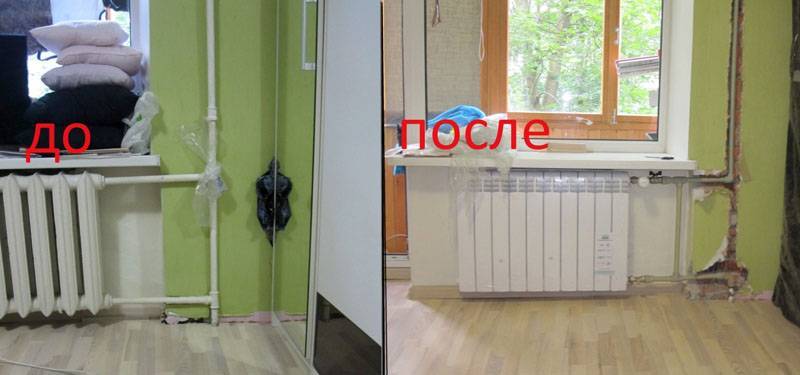

The heat transfer of bimetallic radiators is higher than that of cast iron
We use a reflector screen: the use of polyethylene foam
Using a reflective screen is a fairly popular method of increasing heat dissipation. Foamed polyethylene foam on one side is ideal for this purpose. Such a screen (it should be larger than the radiator itself) is placed behind the battery with foil in the direction of the room and fixed on the wall with double-sided tape or liquid nails. Foamed polyethylene provides additional insulation, and the foil reflects the heat that warmed up the wall before installing the screen, directing it into the room.
Important information! It is best when such moments are thought out even at the stage of installing heating batteries. In this case, a steel ribbed shield can be fixed behind the radiator, which will accumulate heat, and then direct it into the room. Such shields are convenient if heating shutdowns occur frequently.
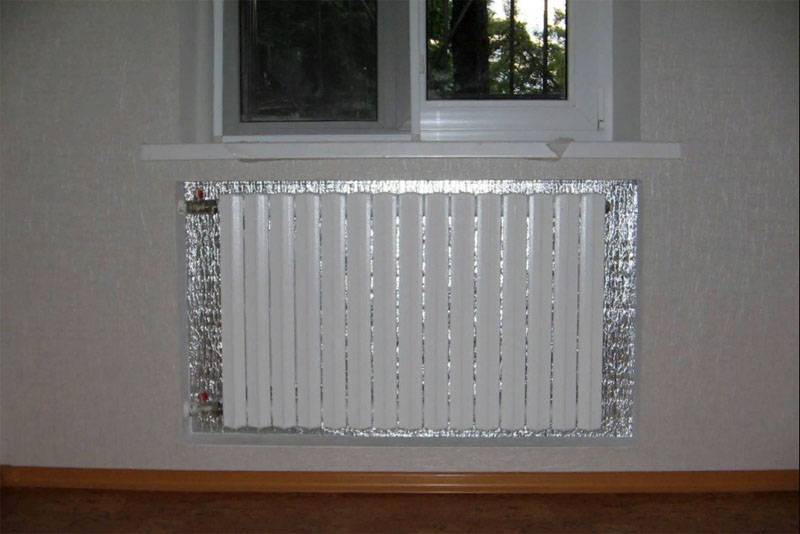

Something like this looks like a screen made of foamed polyethylene foam
Also, basalt slabs with an aluminum coating have proven themselves well as a screen.
Increased heat transfer with accessories and painting
To increase the air temperature in the room, special aluminum casings are used, which are put on the radiator. With their help, the area of the heating battery increases and, as a result, their heat transfer. The cost of such casings is low, and the effect is quite significant.
The color in which the radiators are painted is also of great importance. It is better to choose darker shades for these purposes. For example, a brown-colored radiator has 20-25% more heat transfer than white ones.
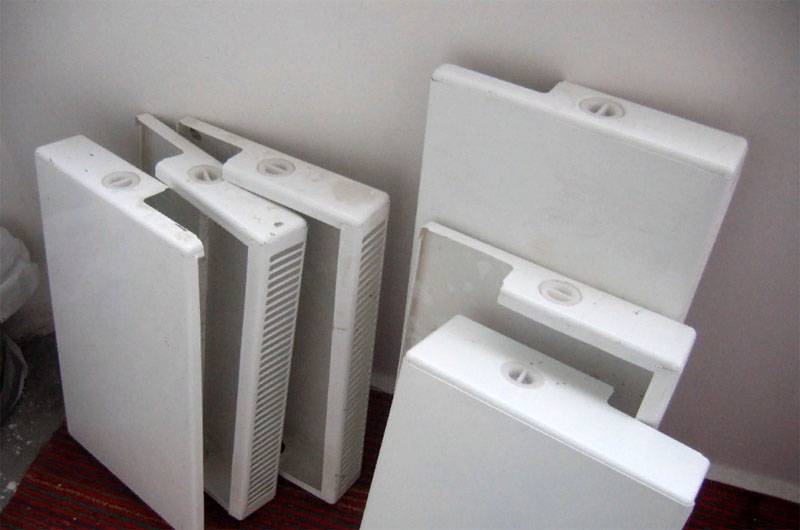

This casing improves appearance and increases heat dissipation.
Improving convection by increasing air circulation
Everyone knows that improved air circulation helps to warm up the room faster. For these purposes, you can use a fan, which is installed in such a way as to achieve the maximum flow of warm air towards the room.
Helpful information! If there are computer coolers at home that are not in use, you can install them under the radiator, directing the air flow upward. This will maximize convection, resulting in a significantly warmer room.
You can increase convection (if the radiator is recessed under the window sill) by cutting holes in the window sill and closing them with screens or decorative covers. Thus, warm air will not be trapped in the niche, which will improve circulation.
It's impossible to win this country! Self-assembly of fans to improve convection:
How to increase the efficiency of a heating battery
The main task of any type of heating batteries is the maximum possible heating of the room. The parameter that determines the extent to which the device meets the assigned tasks is their heat transfer. But not only this can affect a frequently occurring problem, which is how to increase the efficiency of the heating battery. It is possible to cope with heat loss by fairly simple means, but before that it is necessary to find out what can affect the process of heat transfer to the surrounding space. Let's consider the main factors affecting the efficiency of heating devices:
- Radiator model, number of sections and size of the battery itself;
- Type of connection of the radiator to the heat supply network;
- Placement of the heating battery in the room;
- The material from which the battery is made.
All these factors are fundamental to the efficiency of space heating with radiators. However, the radiator efficiency stated by the manufacturer can be improved by using a few tricks in their selection and installation. To do this, first of all, you need to understand what the efficiency of heating batteries is, how to calculate it and what indicators can affect it. (See also: Scheme of water heating of a private house)
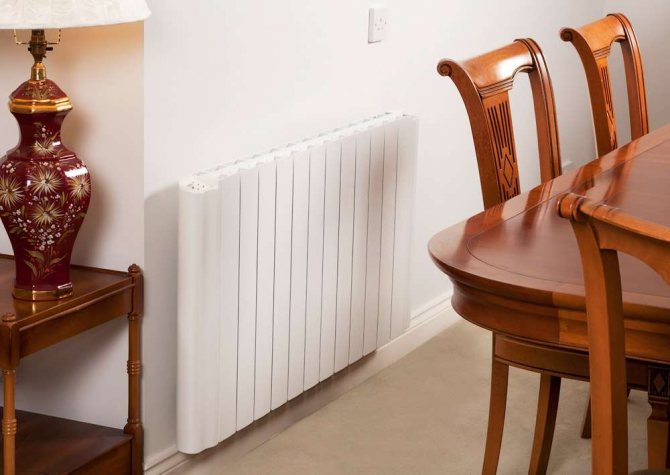

Prologue.
This year we have unprecedented frosts. In some areas of the republic, the air temperature dropped to -24 ° C, which is an anomalous phenomenon for warm Moldova. I don't have a thermometer in my room, but I felt that the hand on the table began to freeze, and I had to put a piece of foam rubber under it.
We, in general, like the Amundsen, are already accustomed to the coolness, but yesterday the chairman of our condominium, collecting signatures under the appeal to the heat supplier, asked what the temperature in our apartment was. It is unlikely that the heat supplier will increase the temperature of the coolant, but perhaps the chairman wants to demand a penalty under the pretext of providing poor quality services.
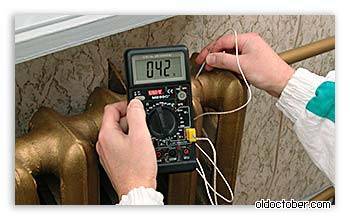

Whatever it was, but this event first pushed me to measure the air temperature in the apartment, and then to conduct this experiment.
Of course, to say that this experiment was unclean is to say nothing.There are too many variables that could affect the accuracy of the result, from the direction of the wind overboard to the activity of the computer working in the test room.
But, the most important parameter, which at another time would not allow this experiment to be carried out at all, is the stability of the coolant temperature.
The fact is that in warmer periods of time, the temperature of the coolant is actively regulated throughout the day to save energy consumption. When there is an abnormal temperature outside, then all the valves are wide open.
Ways to increase heat transfer
At the moment, there are several ways to increase the heat output from an already created and used heating system that did not meet your expectations:
- Installation of convectors. This construction is made of a pipe with metal plates strung on it, made by hand, or factory-made.
- Coloring of the main pipeline in black or other dark color. This method, for all its simplicity, is quite effective. In addition, the color scheme can quite organically fit into the modern design of the premises, in contrast to the recent past, when it was considered a necessary measure.
Note! Paint is just an additional method, which is relevant in rare cases, since the efficiency is too low to "admire" the black stripes.
- Installation of registers in the heating system. The register consists of several large-diameter pipes connected to each other and with welded ends. These designs include heated towel rails in the form of a coil with several loops.
- Rearrangement of radiators with the addition of sections. This option is the most costly, but in terms of efficiency it is higher than the rest.
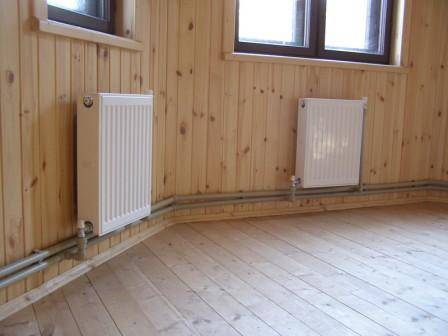

If you decide to add radiators, then place them under the windows or next to the front door (as in the photo)
Recommended! Remember that installing additional insulation materials will also increase heat dissipation by reducing the loss of heat generated. However, it is possible only when erecting a residential building from the foundation, or when dismantling the facade.
Increased heat transfer from batteries. How to do it?
The screen helps to focus the direction of heat flow and increase the temperature in the room.
The design of the screen is simple and affordable. It should have a larger area than the radiators and be installed on a clean wall behind the radiator. Instead of foil, you can use foil insolon - a special material that has a foamed base on one side, and on the other is covered with reflective foil. You need to mount the screen on the wall using any high-quality construction glue.
Purging radiators
Under difficult operating conditions, the central heating battery can become clogged or airy over time. Such changes are accompanied by poor circulation of the coolant and the appearance of cold sections. Blowing out radiators - a quick and economical way to increase heat transfer - will help eliminate air locks and blockages.
There are several methods of purging, which involve the use of different types of equipment:
- hydraulic blowdown;
- cleaning with chemical solutions or soda ash;
- pneumohydro-impulse flushing;
- individual cleaning.
The use of one or several methods of blowing the radiators will improve the efficiency of the radiators and will allow you to forget about the cold and discomfort in the apartment.
It is worth remembering that a central heating system is a complex network of radiators and pipelines.
Therefore, it is advisable to perform some types of blowing of batteries together with neighbors, because otherwise the cleaned sections will again reduce heat transfer after several weeks of operation. You can read more about the methods for flushing the heating system here.
By following simple and accessible recommendations, you can increase the heat transfer of any type of radiator and get the most out of the use of a central heating system. The complex use of methods is the most rational solution to the problem of poor heat transfer and will help the owner achieve efficient operation of heating devices in his home.
Share the article with your friends:
Registers
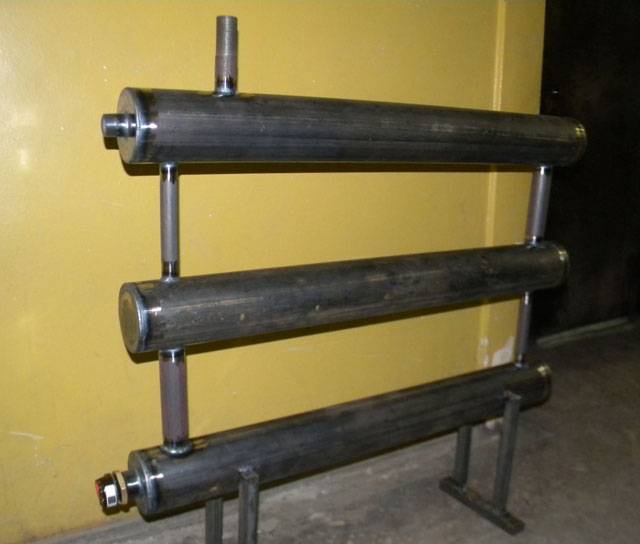

This was a very simple and cheap solution in situations where heating of large areas was required. Although if we talk about the heat transfer of a pipe in such a register in comparison with an aluminum radiator, the difference in efficiency is staggering. Due to the larger area of the heat exchanger of the radiator and the thermal conductivity of aluminum, modern equipment is undoubtedly preferable. And outwardly, the registers looked rather crude.
Nevertheless, registers were acceptable for their time due to their low cost and simplicity. It can be noted that the welded seams on them were very strong, and the clogging of the pipe did not interfere with their functioning.
Underfloor heating systems
If we are talking about a water-heated floor, in contrast to an electric analogue, metal pipes are used as a heating circuit in it, although they have recently become less and less used.
The main reason for the decrease in demand for a water-heated floor is the gradual wear of steel pipes, a decrease in the clearance in them. In addition, the installation method is also important - not everyone can perform welded seams, and the threaded connection threatens with a coolant leak after a while. Naturally, no one will like the result of water leakage from the system in the floor with a screed - the ceiling of the lower floor or basement will be flooded, and the ceiling will gradually become unusable.
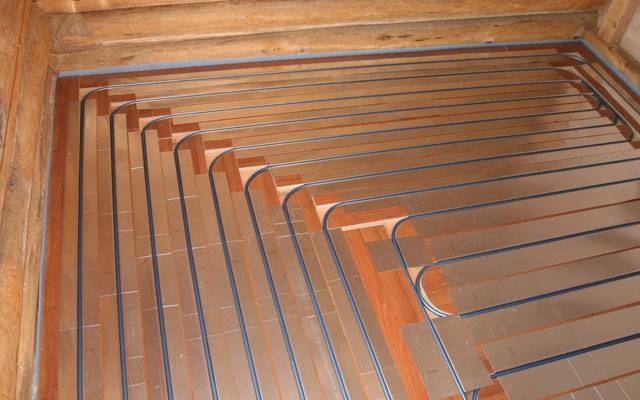

For these reasons, steel pipes in warm water floors were first replaced by metal-plastic coils, the fittings to which were attached outside the screed, and now they prefer reinforced polypropylene.
This material is characterized by a slight thermal expansion, and with proper installation and operation, they can last for more than a dozen years. Alternatively, other polymeric materials are also used.
Please note that the gaps for thermal expansion of reinforced polypropylene still need to be left, although it is small
Small details.
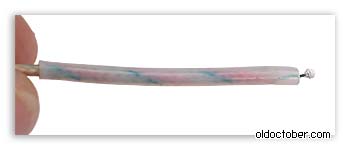

To measure the temperature of the steam heating battery faster and more accurately, it is enough to apply a small amount of heat-conducting paste "KPT-8" to the ball of the digital thermometer sensor. The place of contact during the measurement must be covered with several layers of fabric or a layer of foam rubber.
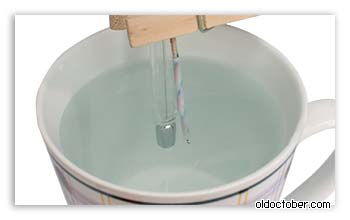

The above experiment made me question the accuracy of my digital thermometer. To make sure that his readings were correct, I compared them with the readings of a mercury thermometer. To do this, I immersed both thermometers in hot water at the same depth and followed the readings as the water cooled.
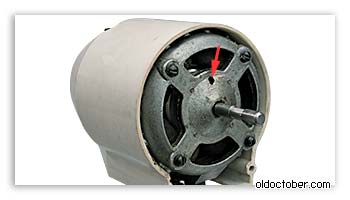

Long-term operation of the fans immediately revealed the weak point of modern devices.
If the 1973 Penguin fan has a front plain bearing equipped with an oil seal (the arrow marks the opening for filling the oil seal with oil), which allowed it to work for almost 40 years, then there is no trace of such an oil seal in a modern fan.
In addition, the "Penguin" has a spring that prevents the occurrence of longitudinal beats of the shaft. The new fan, after two days of operation, began to rumble, since due to the longitudinal beating of the shaft caused by the eccentricity of the propeller, one of the fluoroplastic gaskets quickly worn out.
To eliminate the longitudinal backlash, it took several ordinary and two thin-walled washers, as well as a gasket cut from foam rubber.
First, I disassembled the stator.
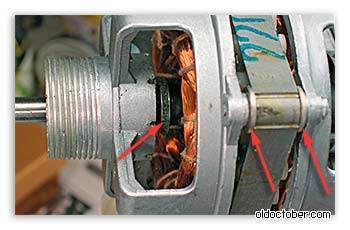

Then he put thin-walled washers and a gasket on the motor shaft, and with the rest of the washers increased the clearance between the bearings.
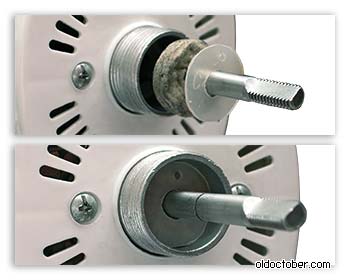

To ensure any kind of long-term operation of the fan, I cut out an oil seal from the felt, and from some nylon cover, an oil seal plug and pressed it all into a recess around the shaft. Naturally, he did not regret the oil either.
I started thinking about buying two dozen 120mm computer fans. I think if you install them directly between the sections of the batteries, then this should reduce noise and increase the efficiency of heat transfer.
Methods for increasing heat transfer
The round shape does not at all contribute to an increase in the heat transfer of metal pipes. An even lower coefficient of the ratio of volume and surface can be found only in the sphere.
Consequently, the problem of how to increase the heat transfer of the pipe undoubtedly faced the developers of the first simple heating devices.
To increase the heat transfer coefficient of a steel pipe, the following methods were previously used:
- The surface of the tube was coated with a matte black paint to enhance the infrared radiation of the heating element. This made it possible to achieve a significant increase in the room temperature. It is worth noting that modern chrome plating on heated towel rails is extremely ineffective for enhancing heat transfer - it is, rather, for beauty.
- An increase in the heat transfer of the pipe due to the welding of additional ribs on it, which made the area of the heating element, and hence the heat transfer, significantly larger. The most advanced use of this method can be called a convector, that is, a section of a bent pipe with welded transverse ribs. Although the pipe itself in this case gives off a minimum of heat.
Any of these methods can be used if the question is how to increase the heat transfer of the heating pipe with your own hands, because they are not at all complicated and are quite feasible at home.
Improving air convection
Among the simplest methods that will help you understand how to increase the heat transfer of a heating pipe with your own hands is the use of the laws of convection. Often, in apartments, batteries are filled with pieces of furniture, protected by decorative boxes or hidden behind heavy curtains. All these elements impede air circulation and it is quite difficult to achieve comfortable temperature conditions in the room, even if the central heating is operating at full capacity.
To optimize the air flow rate, it is necessary to free up the space around the radiator as much as possible.
Without encountering obstacles in its path, the air heated by the battery will move freely around the room and provide the maximum heating level provided for by the radiator power.
Using an electric fan to improve convection
The owners, who are familiar with the physical laws, according to which heating, sewerage, water supply is designed in houses, understand that the speed of air circulation affects the heat transfer of the battery. The faster the air circulates in the room, the more heat it can take from the radiator over a certain period of time.
To improve natural convection, electric fans can be installed near the radiators. It is worth giving preference to silent models that consume a minimum amount of electricity. The fan should be installed at a certain angle to the battery. This simple method is quite effective. He is able to raise the temperature in the room by several degrees.
Arrangement of a reflective screen
As a tool to increase heat transfer, foil for radiators can be used, which will help direct the flow of thermal energy into the room.Radiators that are not equipped with a reflective screen radiate heat in all directions, including given off to cold outer walls.
Radiator painted dark
Another opinion that wanders the Internet is that painting a battery black or brown increases heat transfer by radiation. In most cases, such judgments are based on the physical concept of a "black body", which absorbs and radiates the most. All this also applies to the heating battery. Those painted with light paint emit less than those painted with dark ones. Let's estimate how much.
A bit of physics. According to the Stefan-Boltzmann law, the radiation of an absolutely black body is proportional to the absolute temperature to the 4th degree.
R (T) = σ × T4, where
σ = 5.67 10-8 W / (m2K4) - Stefan-Boltzmann constant.
Real bodies are "gray". For a real "gray" you need to take into account its emissivity ε. The battery itself absorbs infrared radiation from the room, and the textbooks give the corresponding formula, which includes the temperatures of both the battery and the room (in Kelvin to the 4th degree). It is easy to show that if the battery is heated from 20 ° C to 40 degrees, then its radiation will increase 81 times. The calculation (approximate, of course) shows the following. Let a battery with an area of 1 sq. m painted with brown oil paint (ε ≈ 0.8 for it). Let the water temperature in it be 70 ° С, and the rooms - 20 ° С. Then the power of infrared radiation of such a battery will be 300 watts. Not so little! The battery painted with black matte (not glossy!) Paint will heat even more. And if the paint is white, the radiation power will be lower. But aesthetic considerations usually prevail, and batteries (open) are usually painted with light colors.
Black radiators can also be freely found on sale Commentary Sergey Kharitonov Lead Heating, Ventilation and Air Conditioning Engineer Spetsstroy LLC Ask a question “Physics directly proves the effectiveness of painting a radiator in dark colors, but all this refers to ideal operating conditions. Let me remind you that convective heat transfer prevails in conventional water batteries and the color does not affect it in any way. In addition, you need to be confident in the quality of the entire heating system. If 30 ° C comes to your radiator, then don't paint, there will be no sense. Well, do not forget about the aesthetic component. Are you ready to contemplate black "coffins" every day for the sake of a few dozen extra watts? "
Conclusion: effective, but requires ideal operating conditions.
What are the ways to increase the heat transfer of the radiator
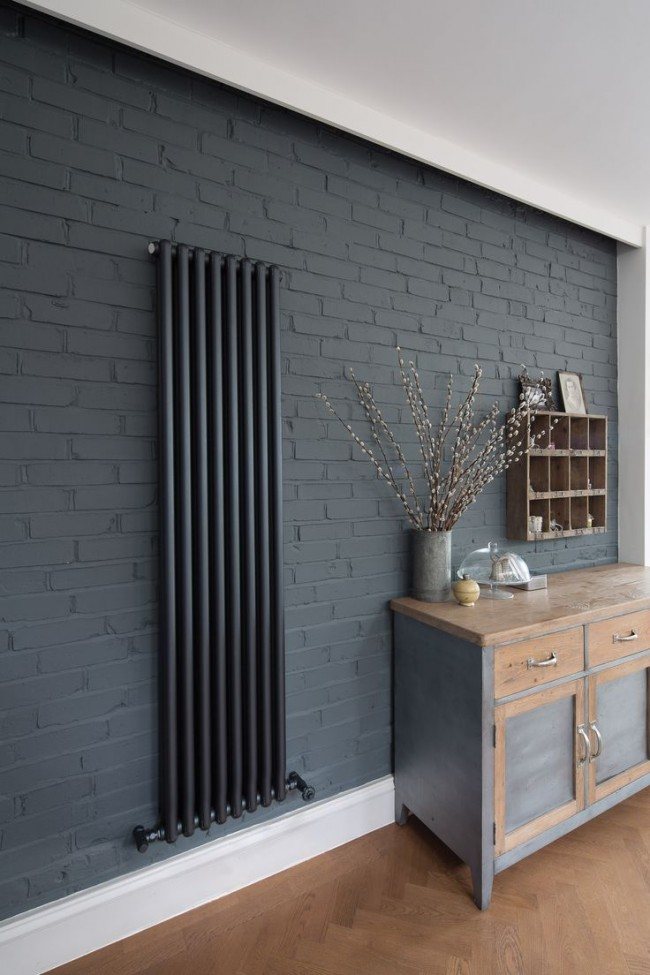

It is quite obvious that the main task of a heating radiator is to heat the room as efficiently as possible. And the main parameter that determines how much the heater copes with this task is the heat transfer from the heating radiator.
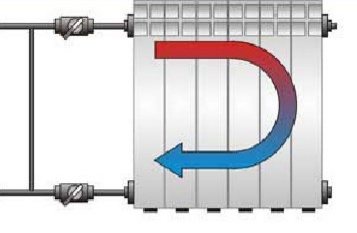

The movement of the coolant along the radiator
This indicator is individual for each model of radiators, in addition, the type of connection of the device, the features of its placement and other factors affect the heat transfer. How to choose an optimal radiator in terms of heat transfer, how to connect it as efficiently as possible, how to increase heat transfer? We will tell about all this in this article!
HEAT RELEASE IS A KEY PERFORMANCE INDICATOR
DETERMINATION OF HEAT DISPOSAL
Heat dissipation is an indicator that indicates the amount of heat transferred by a radiator to a room in a given time. Synonyms for heat transfer are terms such as radiator power, heat power, heat flux, etc. The heat transfer of heating devices is measured in Watts (W).
Heat flow diagram of the building
Note! In some sources, the heat output of the radiator is given in calories per hour. This value can be converted to Watts (1 W = 859.8 cal / h).
Heat transfer from the heating radiator is carried out as a result of three processes: - Heat exchange;
–Convection;
- Radiation (radiation).
Each radiator uses all three types of heat transfer, but their ratio differs for different types of heating devices. By and large, only those devices in which at least 25% of thermal energy is transmitted as a result of direct radiation can be called radiators, but today the meaning of this term has expanded significantly. Therefore, very often under the name "radiator" one can find convector-type devices.
CALCULATION OF THE REQUIRED HEAT TRANSFER
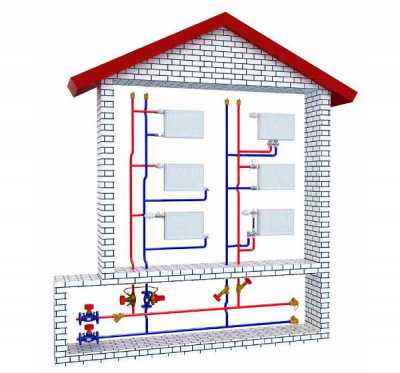

Placement of radiators in the house
The choice of heating radiators for installation in a house or apartment should be based on the most accurate calculations of the required power. On the one hand, everyone wants to save money, therefore they should not buy extra batteries, but on the other hand, if there are not enough radiators, then the apartment will not be able to maintain a comfortable temperature.
There are several ways to calculate the required thermal power of heating devices.
The easiest way based on the number of exterior walls and windows in them. The calculation is made as follows:
-If there is one outer wall and one window in the room, then for every 10 m2 of the area of the room, 1 kW of thermal power of the heating batteries is needed.
-If there are two external walls in the room, then for every 10 m2 of the room area, at least 1.3 kW of thermal power of the heating batteries is required.
The second way is more complicated, but it makes it possible to obtain the most accurate value of the required power.
The calculation is made according to the formula:
S x h x41, where:
-S - the area of the room for which the calculation is made.
-h - room height.
-41 is the standard indicator of the minimum power per 1 cubic meter of room volume.
The resulting value will be the required power of heating devices. Next, this power should be divided by the nominal heat transfer of one section of the radiator (as a rule, this information is contained in the instructions for the heater). As a result, we get the number of sections required for efficient heating.
Advice! If, as a result of dividing, you get a fractional number, round it up, since the lack of heating power reduces the level of comfort in the room much more than its excess.
HEAT RELEASE OF RADIATORS FROM DIFFERENT MATERIALS
Heating devices made of different materials differ in heat transfer. Therefore, when choosing radiators for an apartment or house, it is necessary to carefully study the characteristics of each model - very often, even radiators that are close in shape and size have different power.
Cast iron radiators - they have a relatively small heat transfer surface, they have a low thermal conductivity of the material. Heat transfer occurs mainly due to radiation, only about 20% is due to convection.


"Classic" cast iron radiator
The rated power of one section of the MC-140 cast-iron radiator at a coolant temperature of 900C is about 180 W, however, these figures are valid only for laboratory conditions.
In fact, in district heating systems, the temperature of the coolant rarely rises above 80 degrees, while some of the heat is lost on the way to the battery itself. As a result, the surface temperature of such a radiator is about 600C, and the heat transfer of one section does not exceed 50-60 W.
Steel radiators combine the positive qualities of sectional and convection radiators. Typically, a steel radiator includes one or more panels, inside of which the coolant circulates. To increase the heat output of the radiator, steel fins are additionally welded to the panels, which function as a convector.
The heat transfer of steel radiators is not much higher than that of cast-iron ones - therefore, the advantages of such heating devices can be attributed only to a relatively small weight and a more attractive design.
Note! With a decrease in the temperature of the coolant, the heat transfer of the steel radiator decreases very strongly. Therefore, if water circulates in your heating system with a temperature of 60-750, the heat transfer rates of a steel radiator may be strikingly different from those declared by the manufacturer.
Heat dissipation of aluminum radiators significantly higher than that of the two previous varieties (one section - up to 200 W), but there is a factor that limits the use of aluminum heating devices.
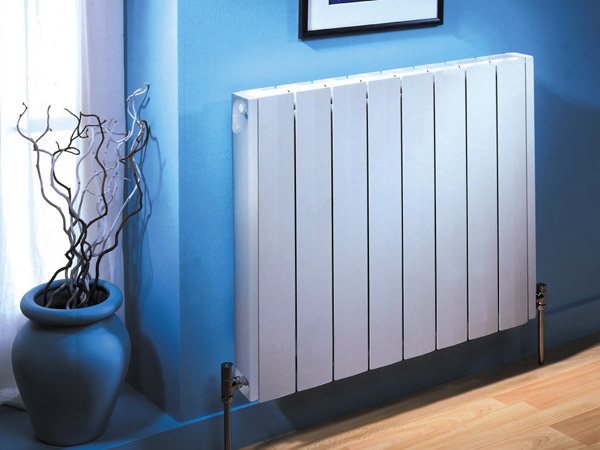

Aluminum radiator
This factor is the quality of water: when using a contaminated heat carrier, the inner surface of an aluminum radiator corrodes. That is why, despite good performance indicators, aluminum radiators should be installed only in private houses with an autonomous heating system.
Bimetal radiators in terms of heat transfer, they are in no way inferior to aluminum. For example, the Rifar Base 500 model has a section heat dissipation of 204 W. And they are not so demanding on water. But you always have to pay for efficiency, and therefore the price of bimetallic radiators is slightly higher than that of batteries made of other materials.
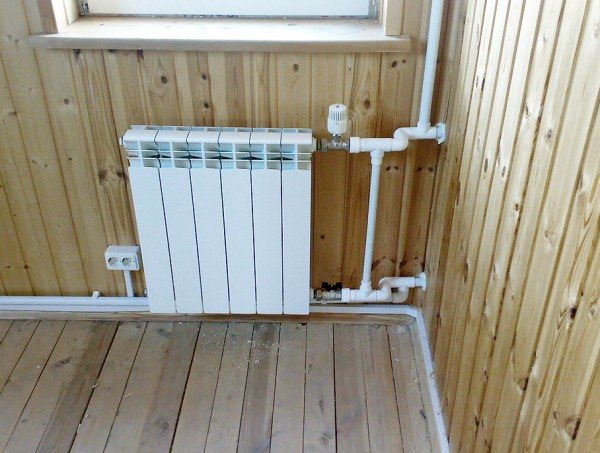

Indoor bimetal radiator
RADIATOR HEAT CONTROL
CONNECTION DEPENDENCE OF HEAT RELEASE
The heat transfer of the radiator depends not only on the temperature of the coolant and the material from which the radiator is made, but also on the method of connecting the radiator to the heating system:
Direct one-way connection is considered the most advantageous in terms of heat transfer. That is why the rated power of the radiator is calculated precisely with a direct connection (the diagram is shown in the photo).
Diagonal connection is used if a radiator with more than 12 sections is connected. This connection minimizes heat loss.
The bottom radiator connection is used to connect the battery to the heating system hidden in the floor screed. Heat transfer losses with such a connection are up to 10%.
One-pipe connection is the least advantageous in terms of power. Heat transfer losses with such a connection can range from 25 to 45%.
Advice! You can study the methods of implementing different types of connection from the video materials posted on this resource.
WAYS TO INCREASE HEAT TRANSFER
No matter how powerful your radiator is, you often want to increase its heat dissipation. This desire becomes especially relevant in winter, when the radiator, even operating at full capacity, cannot cope with maintaining the temperature in the room.
There are several ways to increase heat transfer from radiators:
The first method is regular wet cleaning and cleaning of the radiator surface. The cleaner the radiator, the higher the level of its heat transfer.
Heating battery paint
It is also important to paint the radiator correctly, especially if you are using cast iron sectional batteries. A thick layer of paint impedes effective heat transfer, therefore, before painting the batteries, it is necessary to remove the layer of old paint from them. It will also be effective to use special paints for pipes and radiators with low resistance to heat transfer.
In order for the radiator to provide maximum power, it must be properly installed. Among the most common mistakes in the installation of radiators, experts highlight the inclination of the battery, installation too close to the floor or wall, overlapping radiators with unsuitable screens or interior items.
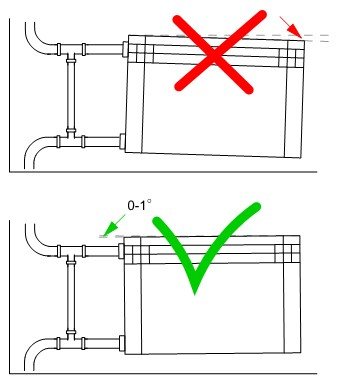

Correct and incorrect installation
To improve efficiency, you can also revise the interior of the radiator. Often, when connecting the battery to the system, burrs remain on which a blockage forms over time, which impedes the movement of the coolant.
Another way to get the most out of it is to mount a heat-reflecting foil shield behind the radiator.This method is especially effective when improving radiators installed on the outer walls of the building.
There are several more ways to increase the heat transfer of the radiator with your own hands. However, they may not be necessary if you initially choose a model with enough power to keep your home warm!
Share this:
How to install any radiators
The coolant in central heating has special impurities that negatively affect many models of radiators. Therefore, they are not installed in apartments. In fact, in order to solve this problem, it is necessary to make sure that instead of the CHP heat carrier, there is our ordinary water.
For these purposes, you need to mount a heat exchanger at the entry point of the central heating risers into the apartment.
A heat exchanger is a device that removes heat from one source and transfers it to another. Simply put, this is our intermediary with you, who will simply take heat from the CHP and transfer it to our own heating system inside the apartment.
What are the benefits of a heat exchanger?
- Performs the function of a boiler by removing heat
- Allows you to create your own heating system inside the apartment with its own heat carrier and pressure.
- Allows you to implement any heating options
There are also disadvantages to using a heat exchanger:
- It gets clogged periodically. Requires dismantling and flushing
- In addition to the heat exchanger, it is necessary to install an expansion tank, a pump and related fittings.
Having installed a heat exchanger, you can mount any radiator system: radial, two-pipe, and others. You can hide the pipes in the screed. You can use any pipe materials without worrying that they will become unusable. Any brand of radiator can be used.
Estimated indicators
To calculate the power of the heating equipment, as well as to find out the scale of heat loss during the transportation of the coolant, it will be necessary to perform heat removal from the pipe at certain temperatures of the liquid inside it and the air outside. The thermal insulation layer serves as an additional parameter.
The formula for calculating the heat transfer of a steel pipe looks like this:
Q = K × F × dT, in which:
Q is the desired result of heat transfer from a steel pipe in kilocalories;
K is the coefficient of thermal conductivity. It depends on the material of the pipe, its cross-section, the number of circuits of the heating equipment, as well as the difference in temperatures between the outside air and the coolant;
F is the total surface area of a pipe or several pipes in the device;
dT is the temperature head, that is, ½ of the total temperature of the liquid at the inlet and outlet from the pipe minus the air temperature in the room.
If the pipes are additionally wrapped with a layer of thermal insulation, then its efficiency in percentage terms (the amount of heat passed through it) is multiplied by the obtained heat transfer rate.
For example, let us calculate the heat transfer of a register from three pipes with a cross section of 100 mm and a length of 1 m. The temperature in the room is 20 ℃, and the coolant when passing through the pipe cools down from 81 to 79 ℃.
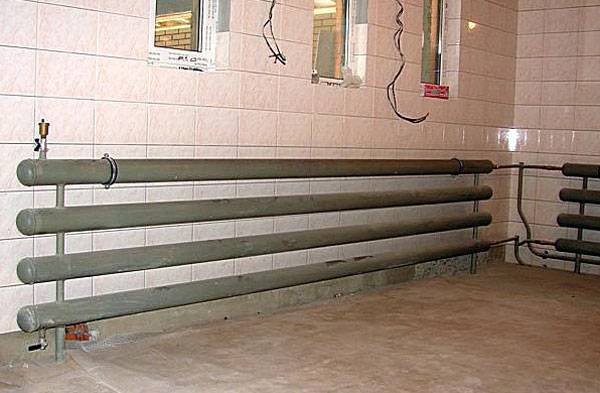

According to the formula S = 2pirh we calculate the surface area of the cylinder:
S = 2 × 3.1415 × 0.05 × 1 = 0.31415 m2. If there are three pipes, then their total area will be 0.31415 × 3 = 0.94245 m2.
Indicator dT = (79 + 81): 2-20 = 60.
The value of K for a register of three pipes with a temperature head of 60 and a cross-section of 1 meter is taken equal to 9. Therefore, Q = 9 × 1 × 60 = 540. That is, the heat transfer of the register will be equal to 540 kcal.
Thus, we examined the concepts of heat transfer, as well as ways to minimize heat loss of a steel pipe for certain cases. There is nothing very complicated about this. The main thing is to approach the issue responsibly.
Summarize
There are a lot of ways to increase the heat transfer of heating radiators. Today we have considered only the main ones. However, it should be remembered that it is always easier to think over everything in advance, at the installation stage, than to put a lot of effort later, without the confidence that the result will be significant. Unfortunately, in Russia everything is done at random. The final advice of the editors of Homius.ru will be the following recommendation: think about the future and spare no expense during installation. The financial resources saved today can turn into costs tomorrow, which will significantly exceed your savings.
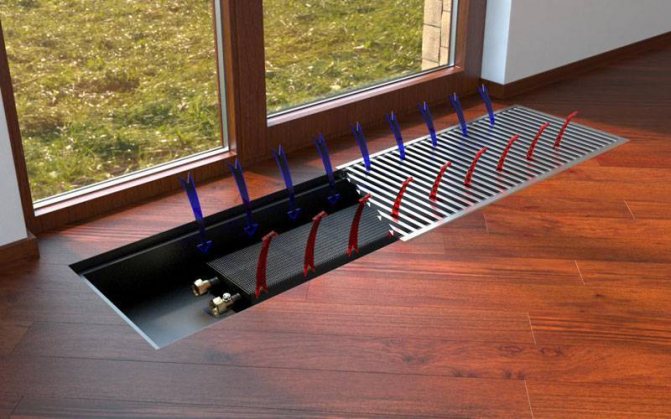

The most optimal option is that all the heat rises upwards, due to which normal heat exchange is created.
We hope that the information presented in today's article was interesting and useful to our Dear Reader. Despite the fact that we have tried to present everything in sufficient detail, you may still have questions about the material. In this case, ask them in the discussions below - Homius.ru editors will be happy to answer them as soon as possible. If you know a way to improve the heat transfer of radiators, which was not reflected in today's article, please share it with other home craftsmen - this information will be very useful. And finally, we suggest watching a short, but quite informative video on today's topic.
Installing a radiator and its heat dissipation
As practice has shown, the amount of heat that the heating battery gives off also depends on where to install it, and how to connect the pipes. Depending on the connection of the pipes, the heat output of the same radiator may remain 100% or decrease by 32%. The most effective is considered to be a diagonal connection when hot water is supplied from the top, and the return pipe is connected from the bottom on the other side. It is according to this scheme that radiators are connected in factories during testing. The most ineffective is the reverse one-way connection (hot water is supplied from the bottom, and cold water is taken from the same side from the top) - here the losses reach 32%.
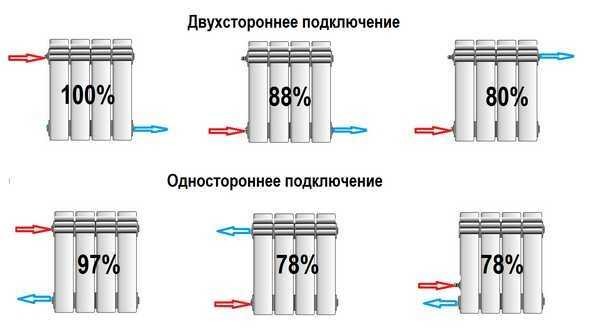

From how the radiators are connected, heat transfer can also decrease or increase.
Protective or decorative screens, large window sills hanging over the device greatly reduce the heat transfer of heating radiators. Significantly reduces heating efficiency and niche installation. And all this must be taken into account when calculating the number of radiators, increasing the number of sections proportionally. Then, under any conditions, the house or apartment will be warm.

